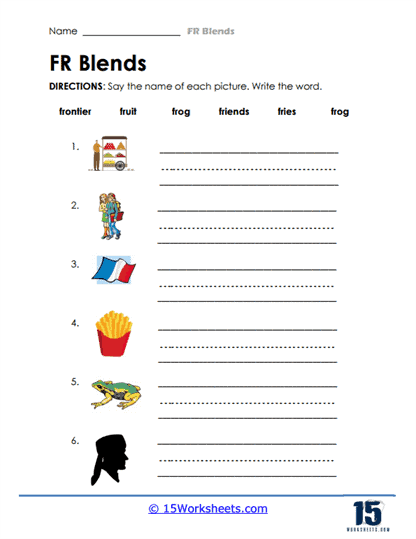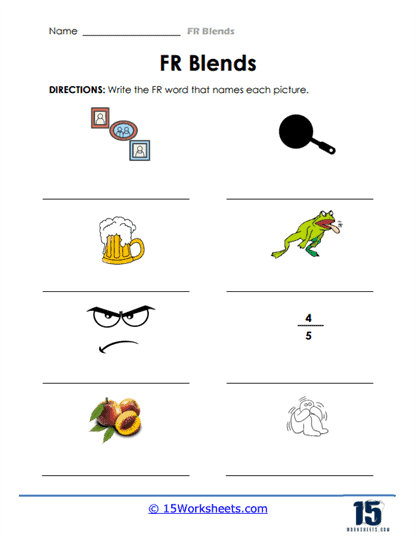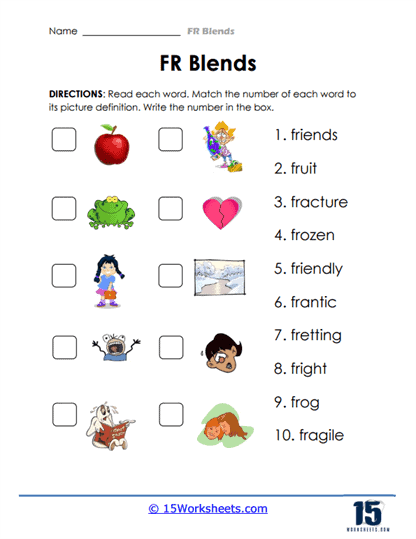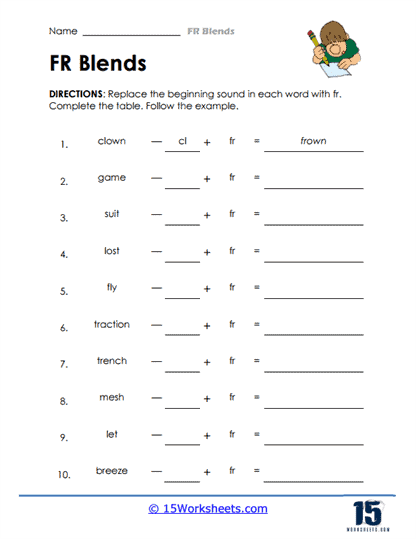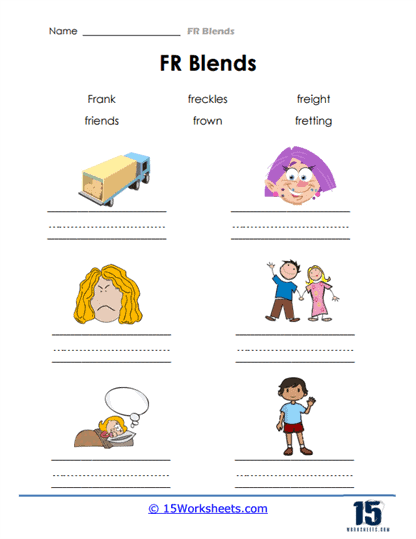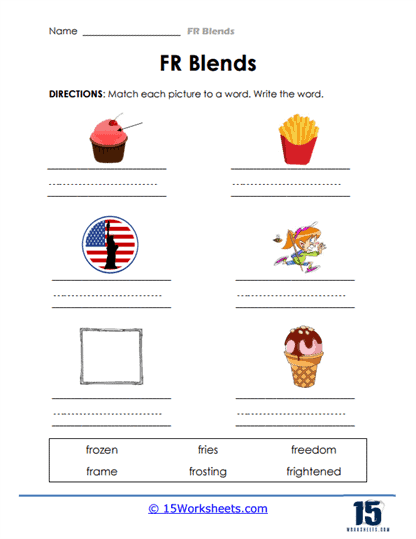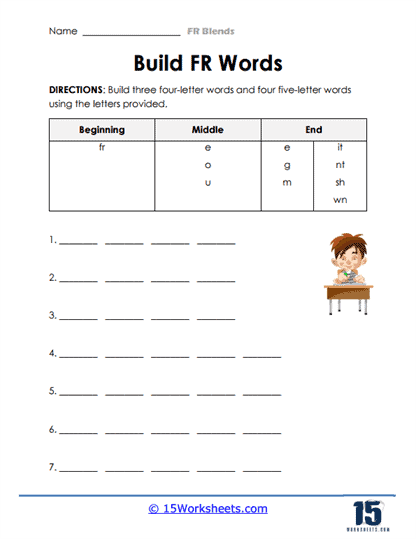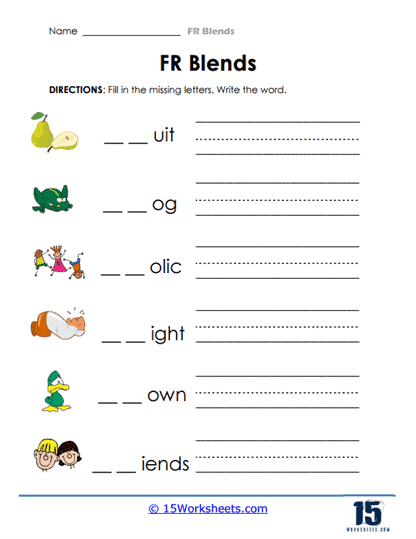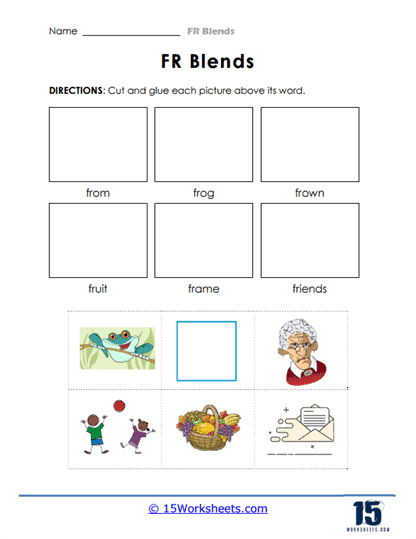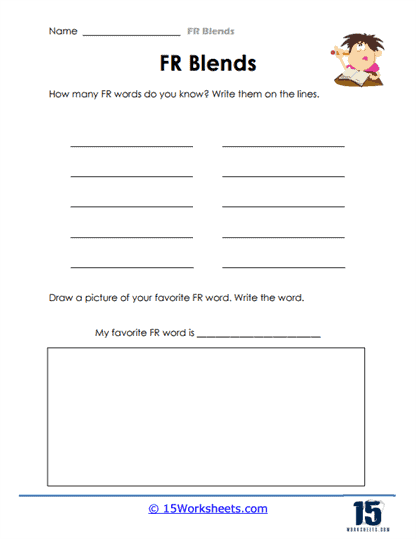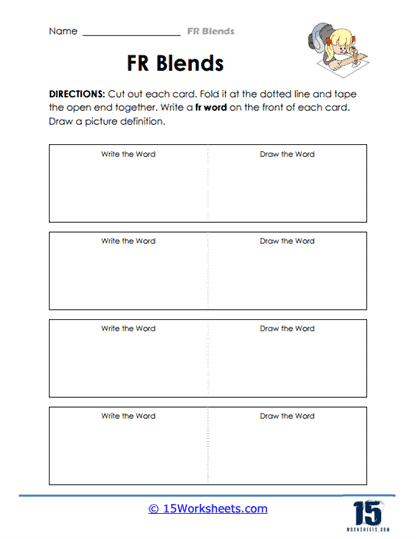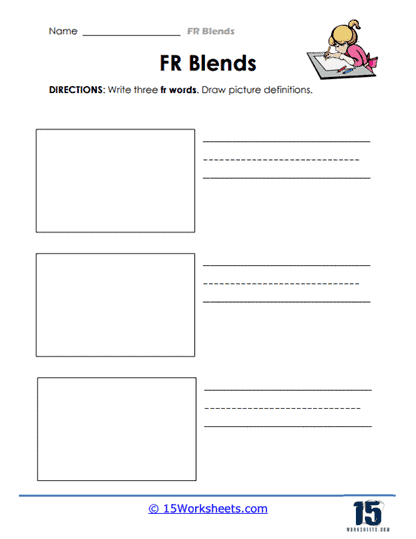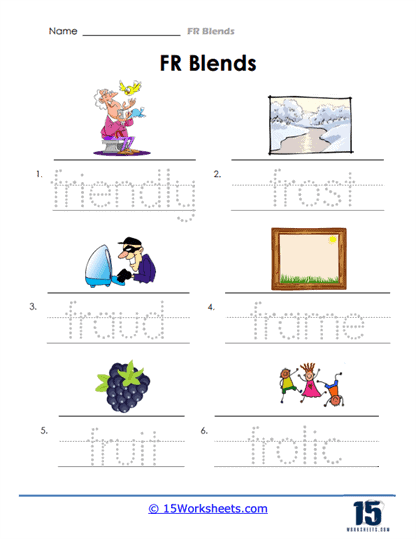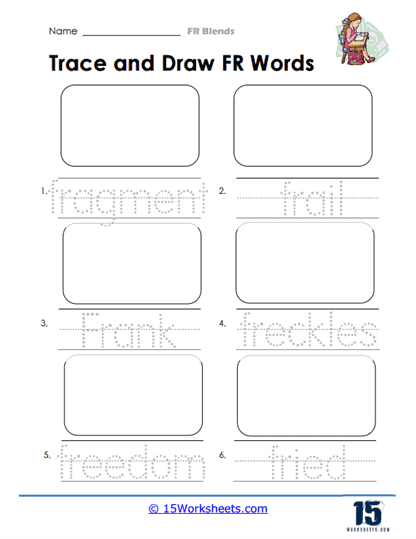FR Blends Worksheets
All About These 15 Worksheets
Phonics, the cornerstone of reading and language acquisition, is a critical skill that sets the stage for a student’s literacy journey. Among the various aspects of phonics, consonant blends play a fundamental role. One such blend that students frequently encounter is the “FR” blend. This collection of FR Blends worksheets has been meticulously designed to assist students in comprehending, practicing, and mastering this blend.
These worksheets often involve exercises where children need to listen to a word and then identify or write down the correct blend. This not only improves their listening skills but also strengthens their phonemic awareness. It’s widely known that repetition is key to learning. These worksheets give children the opportunity to see, hear, and write blends multiple times, reinforcing their learning.
What Are Consonant Blends?
Consonant blends are combinations of two or more consonant sounds that are pronounced together in a word, and they appear at the beginning or end of syllables in English words. The “fr” blend is a common consonant blend where the sounds of the letters “f” and “r” are blended together at the beginning of a word. Examples of words with the “fr” blend include “frog,” “friend,” “frame,” and “frost.”
At the very foundation of reading is the recognition that words are made up of different sounds. These worksheets allow children to see and practice the combinations of letters that produce specific sounds, aiding them in decoding unfamiliar words when they encounter them in texts.
By identifying and practicing consonant blends, children can pronounce words correctly. This is especially useful for words that might not be pronounced phonetically. Recognizing blends quickly means smoother reading. When children are no longer stumbling over blends, they can read more fluidly, which helps with comprehension.
Types of Exercises on FR Blends Worksheets
Spot the FR Blend Word – In this game, you might see a bunch of pictures. Maybe there’s a frog, a tree, a ship, and a fruit. Your job is to circle the pictures that have the “fr” sound. So, you would circle the frog and the fruit!
Fill in the Blanks – Here’s a cool exercise! You get a sentence, but oh no! Some words are missing. For example – “She ate a ____ for breakfast.” You’ll need to think of an “FR” blend word to complete the sentence. In this case, “She ate a fruit for breakfast.”
Matching Time – Match the word to its picture. You might see a picture of a frog and next to it the words – ship, cat, frog, and tree. You’d draw a line from the picture of the frog to the word “frog”.
Cut and Paste – This one’s crafty! You’ll cut out pictures and words and then glue them next to each other if they match. So, if you have a picture of a frying pan and the word “fry”, you’d glue them side by side.
Sorting Game – In this game, you’ll see a big box divided into two sections – “FR Words” and “Not FR Words”. You’ll get a list of words, and you need to sort them into the right section. For example, “froth” goes in the “FR Words” section, but “boat” goes in the “Not FR Words” section.
Blending Challenge – Here’s a neat activity. You’ll be given two separate sounds, like “f” and “r”, and then you have to blend them together to make “fr”. It’s like making a word sandwich!
Draw the Word – This is a favorite for all the artists out there. You’ll see an “FR” blend word like “frame,” and then you get to draw a picture of it.
The Importance of FR Blends
The “FR” blend is a combination of two consonants, ‘F’ and ‘R,’ that produces a distinctive sound when pronounced together. Understanding and mastering FR blends are essential for several reasons:
- Enhanced Pronunciation: Learning to articulate FR blends accurately improves a student’s overall phonemic awareness and speech clarity. This skill is not only valuable for effective communication but also boosts self-confidence.
- Improved Reading Proficiency: Numerous words in the English language contain FR blends. Recognizing and reading these words correctly is essential for fluent and accurate reading. Without this skill, students may struggle with words like “frog,” “fruit,” or “friend.”
- Vocabulary Expansion: As students explore words containing FR blends, they expand their vocabulary. Exposure to a wide range of words helps them understand context and meaning, making them more proficient readers and writers.
- Spelling Proficiency: Understanding the FR blend is not limited to reading; it also plays a significant role in spelling. Students who can recognize the FR blend can spell words like “frame,” “frozen,” and “fry” correctly.
This collection of FR Blends worksheets is an invaluable resource for educators and parents seeking to enhance their students’ phonics and language skills. Understanding FR blends is not just about reading and spelling; it’s about building a robust foundation for effective communication and literacy.
By mastering FR blends through these engaging worksheets, students will be better prepared for a lifetime of confident reading, writing, and speaking, giving them a significant advantage in their academic and personal lives. Invest in this collection today and watch your students flourish on their language journey.


